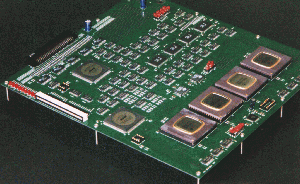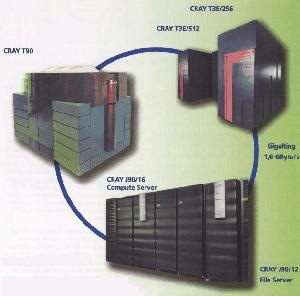|
Numerical simulations give us a powerful tool to repeat the basic
processes we observe in nature and to understand the correlations
between them.
A theoretical construction of a star cluster should allow us
to approximate the dynamical evolution of any system composed of
very many bodies.
But, however, the numercial simulation of a simple cluster containing
some hundred thousand or even some million members still places
heavy demands on the available tools.
A balance has to be found between two constraints:
|
 |
On one hand the realism, i.e. the input of profound physics,
inclusion of all the various effects mentioned on the previous pages
as well as the accuracy of calculations;
and on the other hand, the efficiency, i.e. the limitations
given by the computational effort and suitable codes.
It is only recently, with the availability of fast computers,
that a systematic understanding of the internal dynamics of
systems with a large number of particles has come to light.
Many different kind of approaches have been undertaken to make
some steps forward, e.g.
- codes based on the direct force calculations,
- statistical models, which themselves divide into subgroups,
- usage of high-performance parallel computers, or
- the construction of special hardware devoted for these purposes.
|
 |
All this resulted in a new branch of science, namely "Astrocomputing".
Its goal is to apply, test and exhaust all the technical capabilities
to astrophysical problems.
As a matter of fact, the applications pull computers to their
outermost limit and forces engineers to go for new developments.
Last but not least, it is their requirement that make inventions
progress - even for our civil lives.



